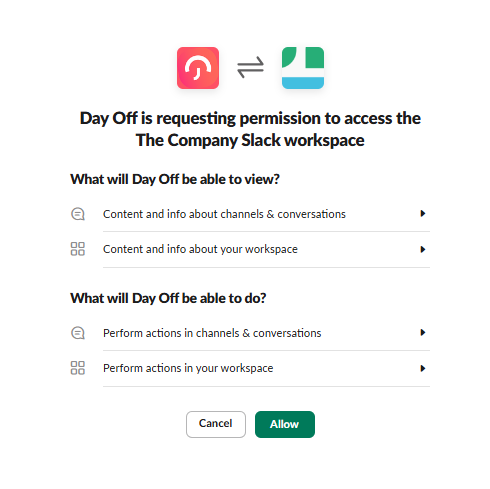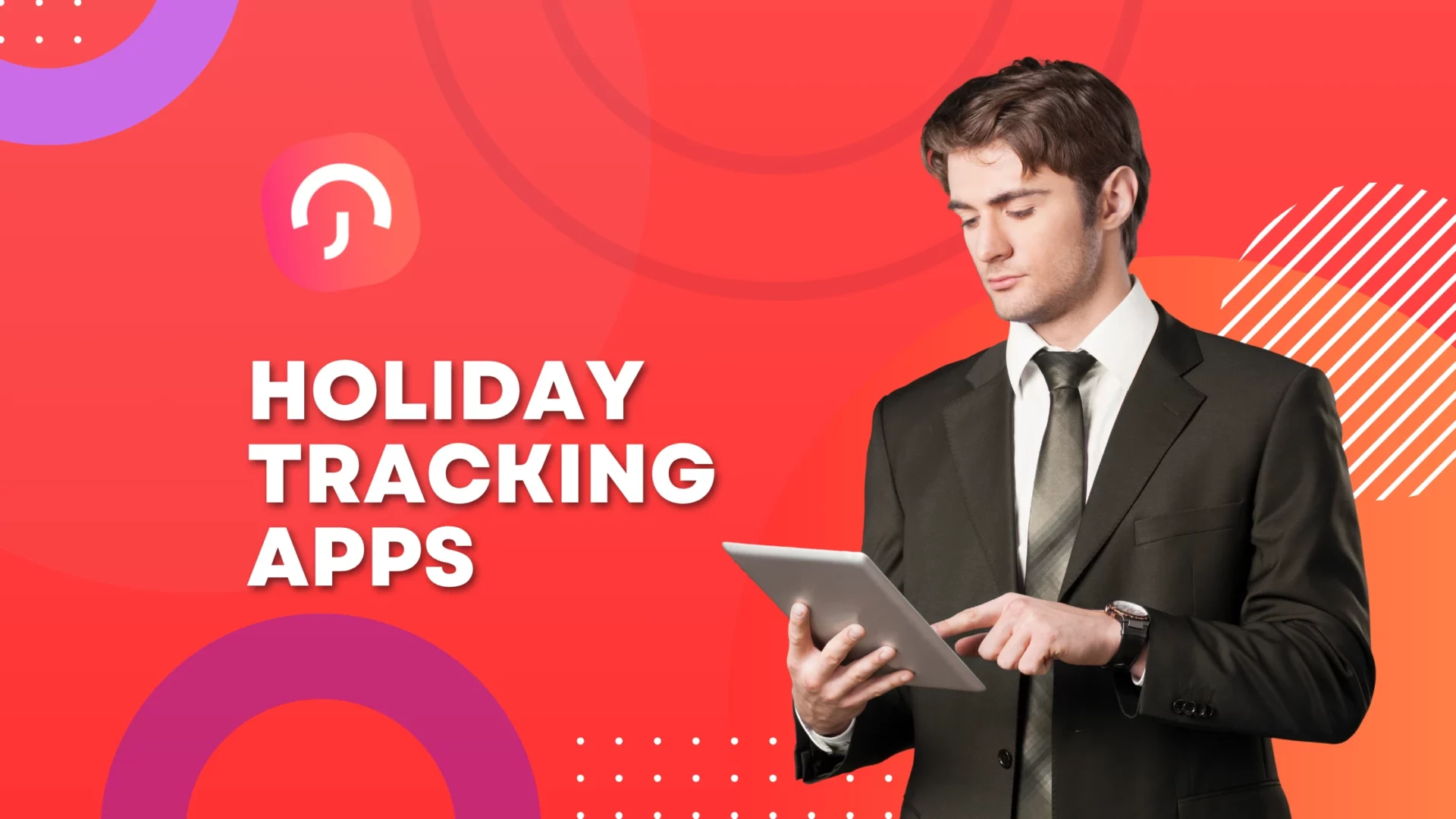Table of Contents
ToggleIn 2025, holiday tracking apps are no longer just convenient tools for managing time off; they’ve become comprehensive solutions that enhance personal productivity, improve workplace efficiency, and elevate user experiences with advanced technologies. As these apps grow in sophistication, understanding their essential features can help users and businesses choose the best option. Here’s a detailed look at the key functionalities to prioritize in 2025.
The #1 Leave Tracker for PTO, Vacations, and Absences
Day Off is the all-in-one solution to simplify how your team manages PTO, vacations, and absences. With just a few clicks, you can set up leave policies, configure approval workflows, and enjoy a seamless experience designed for both employees and managers.
The Day Off app is built to help organizations and individuals take control of time-off management. Employees can easily track their leave balances with real-time updates, ensuring they always know exactly how much time off they have available. There’s no limit to the number of employees you can add, making the platform scalable for teams of any size.
The system supports multiple leave types, including annual, sick, maternity, paternity, and more, and allows you to manage both day-based and hour-based balances. You can create as many leave types and policies as your organization requires, ensuring complete flexibility. To align with your operational needs, you can also customize the starting day of the week and import regional public holidays directly from Google, so your calendar is always accurate.
Day Off integrates seamlessly with popular tools like Slack, Google Calendar, Outlook, and Microsoft Teams, keeping your entire team connected and informed. It also supports advanced features such as accrual management and carryover rules, ensuring leave entitlements are calculated and tracked with precision.
With Day Off, leave management becomes effortless, transparent, and tailored to your organization’s unique needs.
Intuitive User Interface with Personalization Options
An intuitive and aesthetically pleasing user interface remains a top priority. However, apps in 2025 have taken this a step further by offering personalized dashboards tailored to individual needs.
What to Look For:
- Customizable Views: Whether you prefer calendar grids, timeline scrolls, or summary cards, apps should let you customize how data is displayed.
- AI-Powered Suggestions: Look for apps that analyze your behavior and suggest optimal vacation days, align with your company’s blackout periods, or help avoid overlapping with team members.
- Accessibility Features: Enhanced accessibility options, such as voice control, high-contrast modes, and multi-language support, ensure inclusivity for all users.
Seamless Integration with Ecosystems
With remote work and hybrid setups becoming the norm, seamless integration across various platforms and tools is a must.
What to Look For:
- Workplace Tool Integration: Apps should sync effortlessly with tools like Microsoft Teams, Slack, and Calendars, enabling automatic syncing to shared calendars.
- Cross-Platform Functionality: Whether on iOS, Android, or desktop, your app should ensure data syncs instantly across all devices.
Example:
Apps allow employees to sync their leave schedules directly with their team’s shared Google Calendar, preventing scheduling conflicts.

Advanced Leave Management Features
For employees and managers alike, leave management has become more sophisticated, combining automation with transparency.
What to Look For:
- Real-Time Leave Balances: No more manual calculations, apps should provide up-to-date leave balances, factoring in accrued or carried-over days.
- Approval Workflows: Automated approval processes can route requests through the correct chain of command and notify users in real-time.
- Policy Compliance Alerts: Apps must ensure your leave requests align with company policies, such as minimum notice periods or departmental thresholds.
Example:
App notifies users if their leave request violates company policy and suggests alternative dates to ensure compliance.
Calendar Integration
In 2025, one of the most critical features of holiday tracking apps is seamless integration with calendars, making it easier for users to manage their personal and professional schedules.
What to Look For:
- Two-Way Syncing: Ensure the app can both pull events from and add approved leave requests to popular calendar platforms like Google Calendar and Outlook.
- Shared Calendars: Features that enable shared team calendars help users see colleagues’ schedules and avoid overlapping holidays.
- Reminders and Notifications: Apps should send timely alerts for upcoming vacations or potential conflicts.
- Time Zone Awareness: For international teams, the app should automatically adjust leave schedules and reminders based on time zones.
Example:
App integrates deeply with multiple calendar systems, adding approved time-off days automatically while flagging potential scheduling conflicts during the approval process.

Security and Data Privacy
With the rise of connected apps, safeguarding sensitive information is more crucial than ever.
What to Look For:
- End-to-End Encryption: Protects your leave requests, travel plans, and personal data from unauthorized access.
- GDPR Compliance: Apps must adhere to international data protection regulations, especially if they operate across multiple regions.
- Biometric Authentication: Features like fingerprint or facial recognition enhance security.
Example:
Apps use advanced encryption protocols and allow users to customize privacy settings, ensuring their data is always secure.
Gamification and Social Features
Gamification is increasingly popular, adding an element of fun to leave tracking while fostering teamwork.
What to Look For:
- Leaderboards: Encourage employees to balance leave usage with productivity by ranking team members based on unused leave days.
- Social Sharing: Options to share vacation plans or photos with colleagues can boost morale and team bonding.
- Achievements and Rewards: Points systems for effective leave management or wellness-focused breaks can incentivize better practices.
Example:
BreakBuddy rewards users with badges for maintaining a healthy balance of leave days and provides friendly competition through team leaderboards.
Sustainability and Ethical Features
As users grow more conscious of environmental impact, holiday tracking apps are incorporating sustainability features.
What to Look For:
- Carbon Footprint Calculators: Track the environmental impact of your travel plans and suggest greener alternatives.
- Eco-Friendly Recommendations: Apps that prioritize eco-friendly accommodations and transport options align with users’ values.
- Charity Integration: Some apps let users donate a portion of their holiday budget to environmental causes.
Example:
GreenGetaway calculates the carbon emissions of your planned trip and offers offsets through partnerships with reforestation projects.
Smart Notifications and Alerts
Timely alerts are essential for a seamless experience.
What to Look For:
- Approval Status Updates: Notify users as requests are approved or rejected.
- Upcoming Leave Reminders: Timely alerts to help you prepare for vacations.
- Conflict Warnings: Instant alerts for scheduling overlaps or policy violations.
Comprehensive Analytics and Reporting
Analytics help users and organizations better understand time-off patterns.
What to Look For:
- Usage Statistics: Track leave patterns over weeks, months, or years.
- Team Productivity Insights: Highlight how leave impacts team efficiency.
- Customizable Reports: Generate tailored insights for HR or personal use.
Frequently Asked Questions
Can holiday tracking apps manage both paid and unpaid leave?
Yes. Most modern holiday tracking apps allow organizations to set up categories for both paid and unpaid leave. This ensures accurate tracking of all absences without impacting PTO balances.
Do these apps work for remote or hybrid teams?
Absolutely. Holiday tracking apps in 2025 are designed with remote and hybrid teams in mind. They adapt to flexible schedules, sync across multiple time zones, and integrate with collaboration tools like Slack, Microsoft Teams, and Google Workspace.
How secure is my data in a holiday tracking app?
Security is a top priority. Leading apps use end-to-end encryption, biometric authentication, and strict GDPR compliance to protect sensitive employee data. Many also offer customizable privacy settings so you remain in control of your information.
Can employees see their leave balances in real time?
Yes. Employees can view up-to-date leave balances, accruals, and carryovers through self-service dashboards. This reduces the need for HR inquiries and ensures everyone has transparency into their available time off.
Do holiday tracking apps integrate with calendars?
They do. Most apps now offer two-way syncing with platforms like Google Calendar and Outlook. This ensures approved leave requests appear instantly in shared team calendars, helping managers avoid scheduling conflicts.
Can I customize leave policies for different departments or locations?
Yes. Apps support multiple leave types and policies, allowing organizations to tailor rules for different teams, departments, or international offices. This flexibility ensures compliance with both internal policies and regional labor laws.
How do apps handle holidays across different countries?
Modern holiday tracking apps allow you to import public holidays specific to each country or region. This makes them ideal for global teams, ensuring schedules reflect local holidays without manual updates.
Do these apps support carryovers and accruals?
Yes. You can set up automatic accrual rules and carryover limits to ensure PTO is calculated fairly. Apps also notify managers and employees about upcoming expirations of unused leave, reducing confusion and loss of benefits.
Are there features to encourage better work-life balance?
Many apps now include gamification and wellness-focused features, such as leaderboards, achievement badges, and wellness reminders. Some even integrate with sustainability tools to help employees plan eco-friendly vacations.
Conclusion
Holiday tracking apps in 2025 have evolved into multifaceted tools that simplify leave management, enhance travel planning, and improve work-life balance. From calendar integration to gamified features and robust security measures, these apps are essential for modern users. Whether you’re an individual looking to plan your next vacation or a business aiming to streamline employee leave management, choosing an app with the right features can make all the difference.
By focusing on these key functionalities, users can not only optimize their holiday experiences but also ensure they align with broader goals like wellness, productivity, and sustainability. As the world of technology continues to innovate, holiday tracking apps are poised to redefine how we think about time off.
